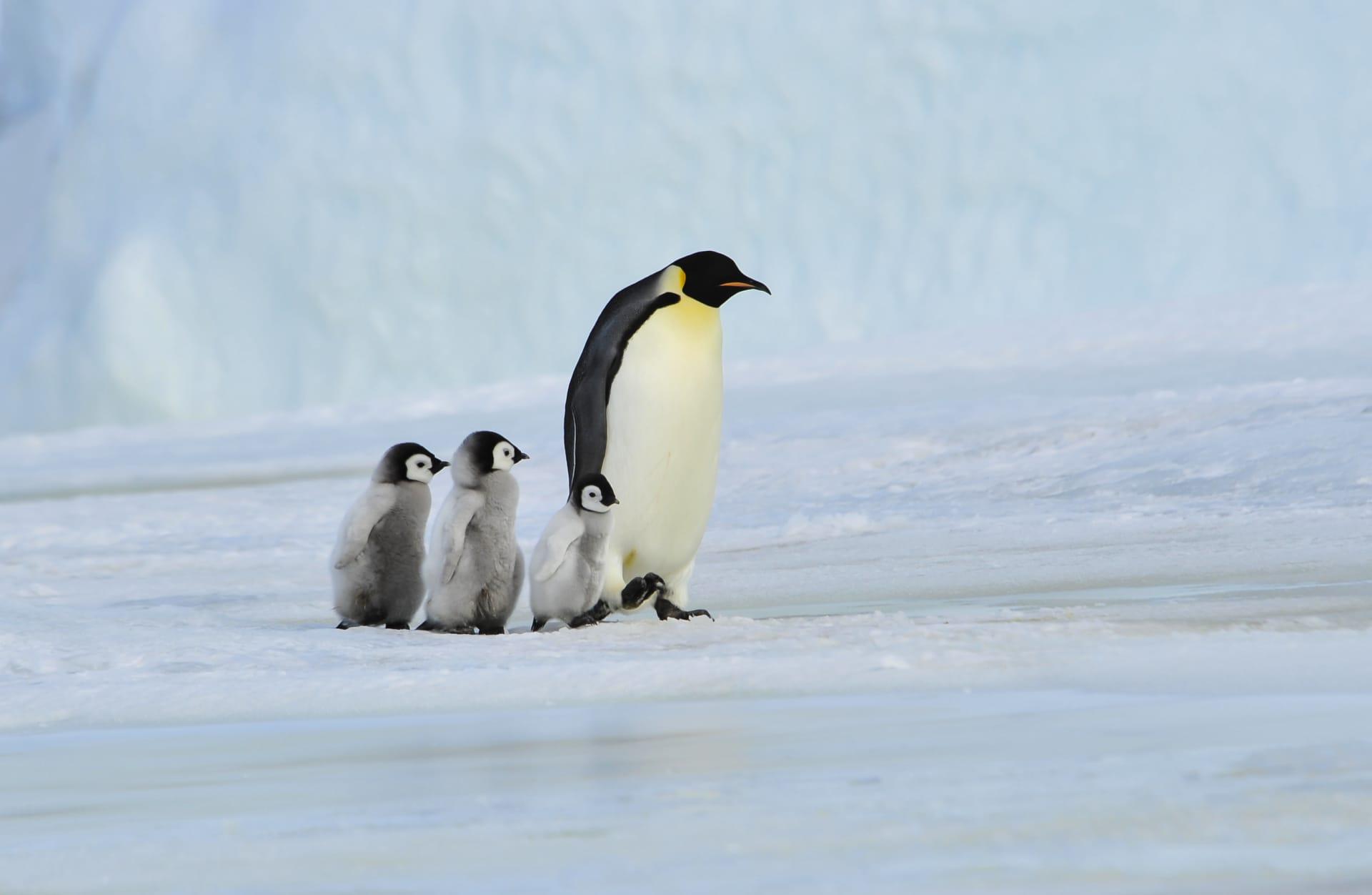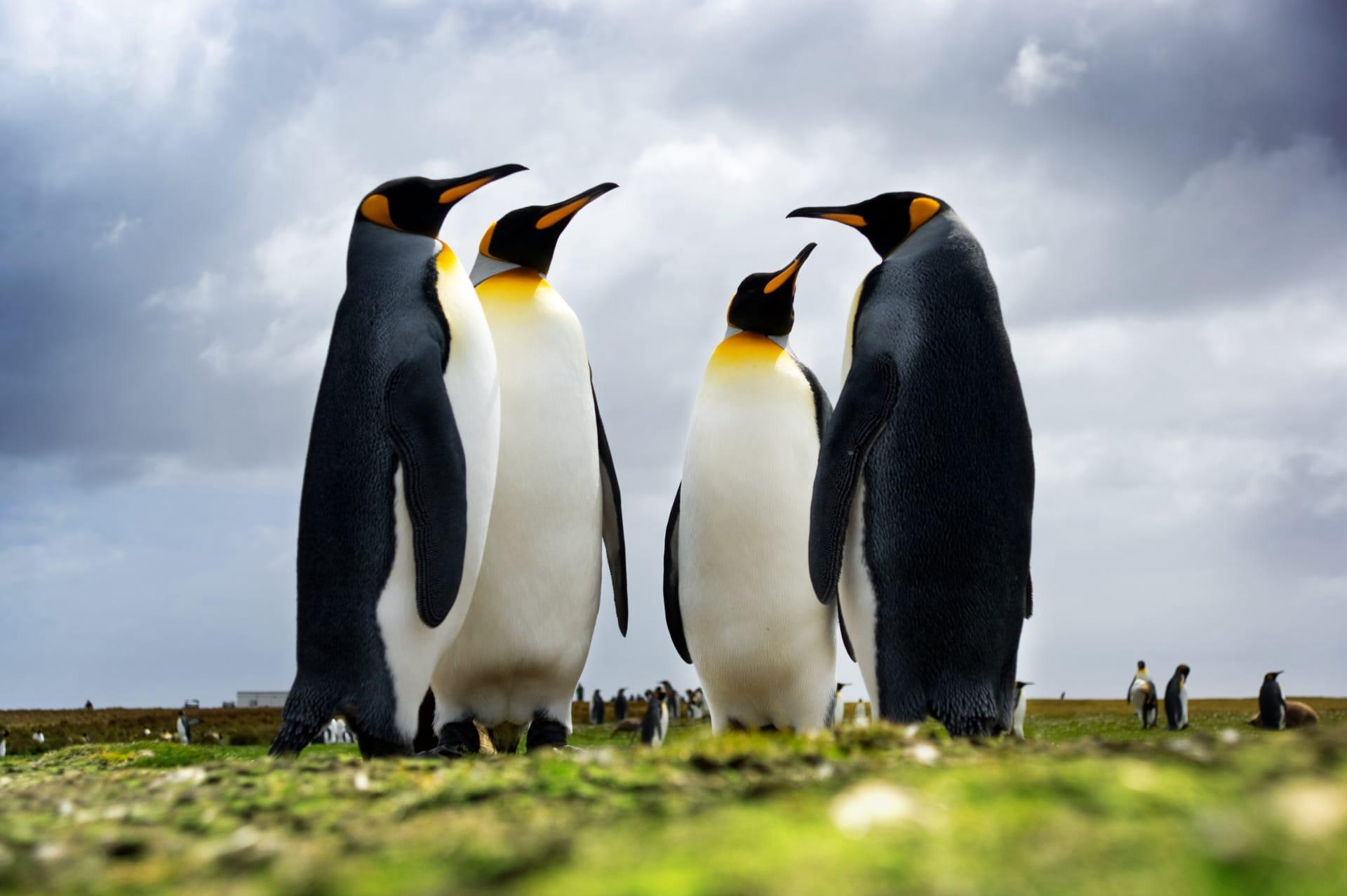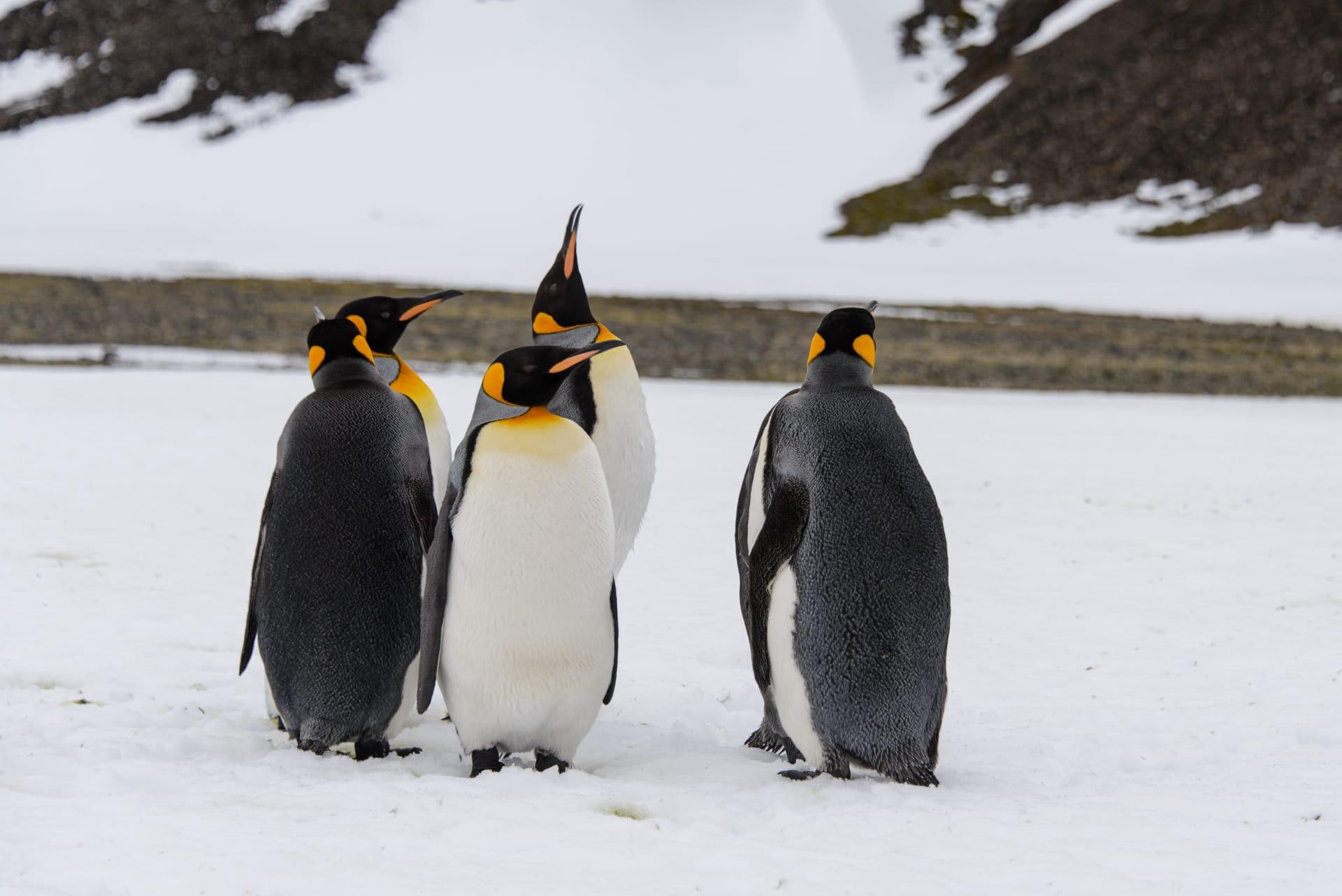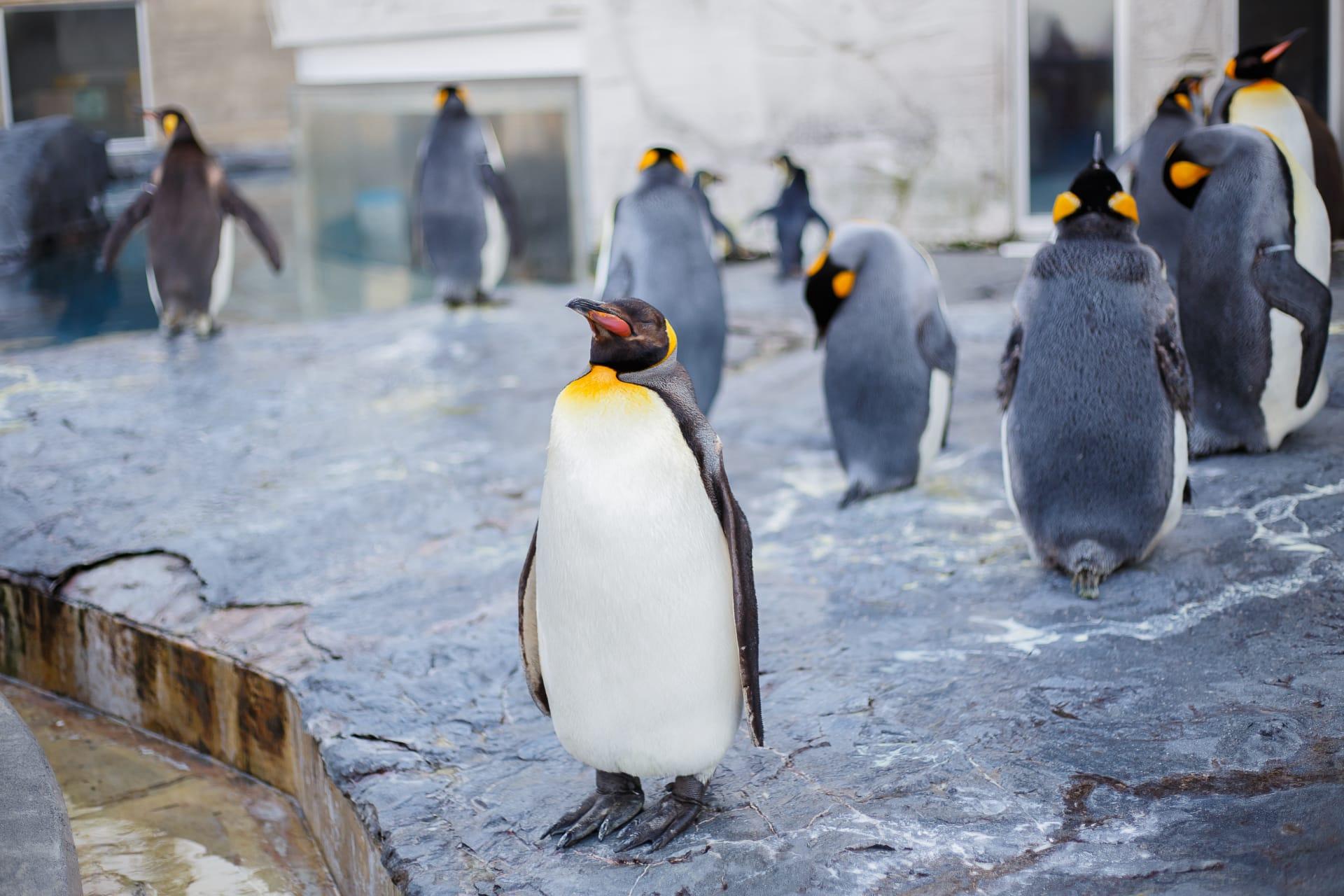1
Emperor penguins are the tallest and heaviest of all penguin species, standing at an average of 45 inches and weighing up to 88 pounds. Their hefty size helps them retain heat in the frigid Antarctic climate, where temperatures can plunge to -58°F. To survive this extreme cold, they boast a unique layer of dense, waterproof feathers, about 100 feathers per square inch, and a thick layer of blubber. This combination provides a highly efficient insulation system.
During the harsh Antarctic winter, Emperor penguins embark on a remarkable breeding journey. They travel up to 50 miles inland on ice, away from the predators in the ocean. What's truly fascinating is their breeding cycle aligns with the Antarctic winter so that their chicks hatch in spring when food is more abundant. This incredible timing showcases their instinctual understanding of the environment and survival strategies.

2
Emperor penguins have a unique way of finding their mate in a colony of thousands. They use a distinct call, known as an “ecstatic display song,” to attract and identify their partners. Each penguin's call has a unique frequency and pattern, which prevents confusion in the crowded colony. This vocal identification system is crucial in the noisy and visually obstructive environment of the Antarctic.
These penguins are also known for their impressive diving abilities. They can dive deeper than any other bird, reaching depths of over 1,800 feet and staying submerged for up to 22 minutes. This skill is essential for hunting their primary diet of fish, squid, and krill. Their bodies are perfectly adapted for this, with solid bones to reduce buoyancy and large oxygen stores in their muscles to sustain long dives.

3
The social behavior of Emperor penguins is a key to their survival in the extreme Antarctic environment. During the coldest part of the Antarctic winter, they form tightly packed groups called huddles. These huddles can include thousands of penguins standing shoulder to shoulder, sharing body heat to protect against the cold. The penguins take turns moving to the center of the huddle where it's warmest, ensuring each member gets a chance to warm up.
Emperor penguins are also remarkable for their fasting endurance. During the breeding season, males fast for about 115 days while they incubate the eggs. They balance the egg on their feet and cover it with a flap of skin called a brood pouch. During this period, males can lose almost half their body weight. This sacrifice ensures that the female can feed in the ocean and return with enough food for the newly hatched chicks.

4
Emperor penguins have a highly developed sense of hearing, which is crucial for their survival. This acute hearing aids them in locating each other within crowded colonies and in the detection of predators under the ice. Their ears are adapted to hear a wide range of frequencies, both above and below water, which is essential for communication and hunting in their dual aquatic and terrestrial environments.
Their coloration is not just visually striking but also serves a purpose. The black and white plumage provides camouflage while swimming. From above, their black backs blend with the dark ocean depths, and from below, their white bellies match the bright surface light. This countershading makes them less visible to predators and prey, aiding in both defense and hunting strategies.

5
Emperor penguins' lifespan is notable, with some living up to 20 years. However, their first few years are the most perilous, with up to 90% of chicks not surviving their first year. This high mortality rate is due to factors like extreme weather, predation, and food scarcity. Those that do survive their initial years have a higher chance of reaching a full lifespan, showing remarkable resilience in a harsh environment.
Despite their awkward waddle on land, Emperor penguins are agile swimmers. They can reach speeds of up to 7.6 miles per hour in water, using a unique form of locomotion called "porpoising," where they leap in and out of the water. This method of swimming is energy-efficient and allows them to breathe while maintaining speed, which is crucial during long foraging trips and when escaping predators.